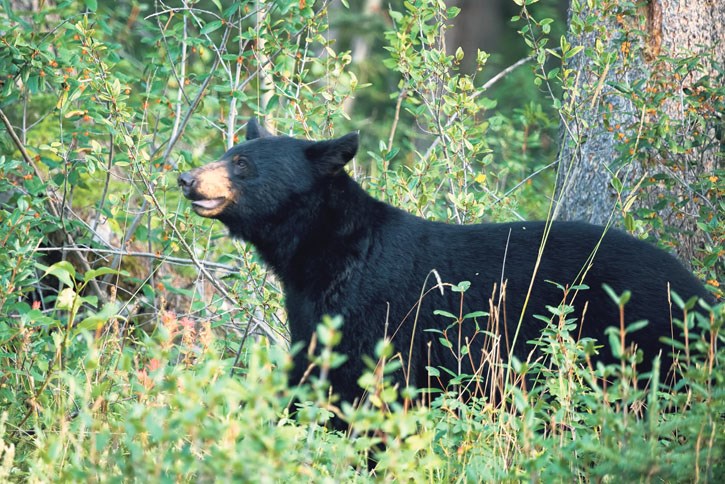BANFF – A black bear believed to have been fed human food is likely heading into the den, particularly in light of the first snowstorm of the season that blanketed the region Monday and into Tuesday (Oct. 23-24).
Saundi Stevens, Parks Canada’s wildlife management specialist with the Lake Louise, Yoho and Kootenay field unit, said there has been no sign of the bear since it was captured and fitted with a GPS collar on Oct. 11.
"He’s been distant from the roadside and currently we suspect he’s kind of moved to denning habitat and his movement is slowing down,” she said.
“I suspect if he hasn’t done so already, he’s in the vicinity of his den. It’s unlikely he will be out again this fall.”
The adult male black bear, which has shown behaviours consistent with being fed human food, approached a group of Parks Canada staff while they were eating lunch at a picnic table at the Coleman day-use area along Highway 93 North in Banff National Park on Oct. 10.
The bear would not leave the area despite significant attempts to scare it away. The same bear was later reported attempting to access the day-use area outhouse.
Based on a description of a white blaze on his chest, Stevens said the same bear is also believed to have boldly approached a car in an incident that was shared on social media.
“We’ve since spoken to the people who posted it, but the bear was kind of up on the car window, with his paws trying to get in the car,” she said.
“They had stopped and watched the bear, so those are pretty strong indications that bear’s been fed from a car before.”
The GPS collar has allowed the park staff to monitor the location of the bear in near-real time.
In this case, there hasn’t been a need for aversive conditioning, which includes shouting, clapping, firing bear bangers, and generally creating sounds and experiences to scare bears away and to make areas of high human use unpleasant for wildlife.
“We actually didn’t have any other interaction with him or need to haze him in any way,” said Stevens.
Stevens didn’t mince words, saying human food can lead to the death of bears.
She said Parks Canada gets hundreds of reports a year of people feeding wildlife.
“We’re trying to get the message out that human food kills wildlife, and that everybody needs to make sure that wildlife doesn’t get food rewards or access food, whether that means littering or not feeding wildlife or making sure all their garbage is put away or using the bear-proof bins,” she said.
“Feeding wildlife is dangerous and it kills bears.”
Parks Canada encourages people who choose to stop roadside to view bears to pull over in a safe place and move on quickly to avoid a traffic jam developing.
“That’s what keeps our bears safe,” said Stevens.
Stevens said a trap was set up in the Coleman day-use area to catch the bear, prompting the closure of the area.
“The idea is we closed the day-use area and released him at that site, using some of those hazing techniques to kind of reinforce the message that this is going to be an uncomfortable spot to be,” she said.
The GPS collar will allow the park team to monitor the bear’s behaviour in spring when he heads out of the den, hopefully in search of natural food instead of human food.
“Having this guy collared, we hope to be on top of that first thing in the spring and curb some of that behaviour,” said Stevens.
Parks Canada estimates there are 20 to 40 black bears in Banff National Park.




